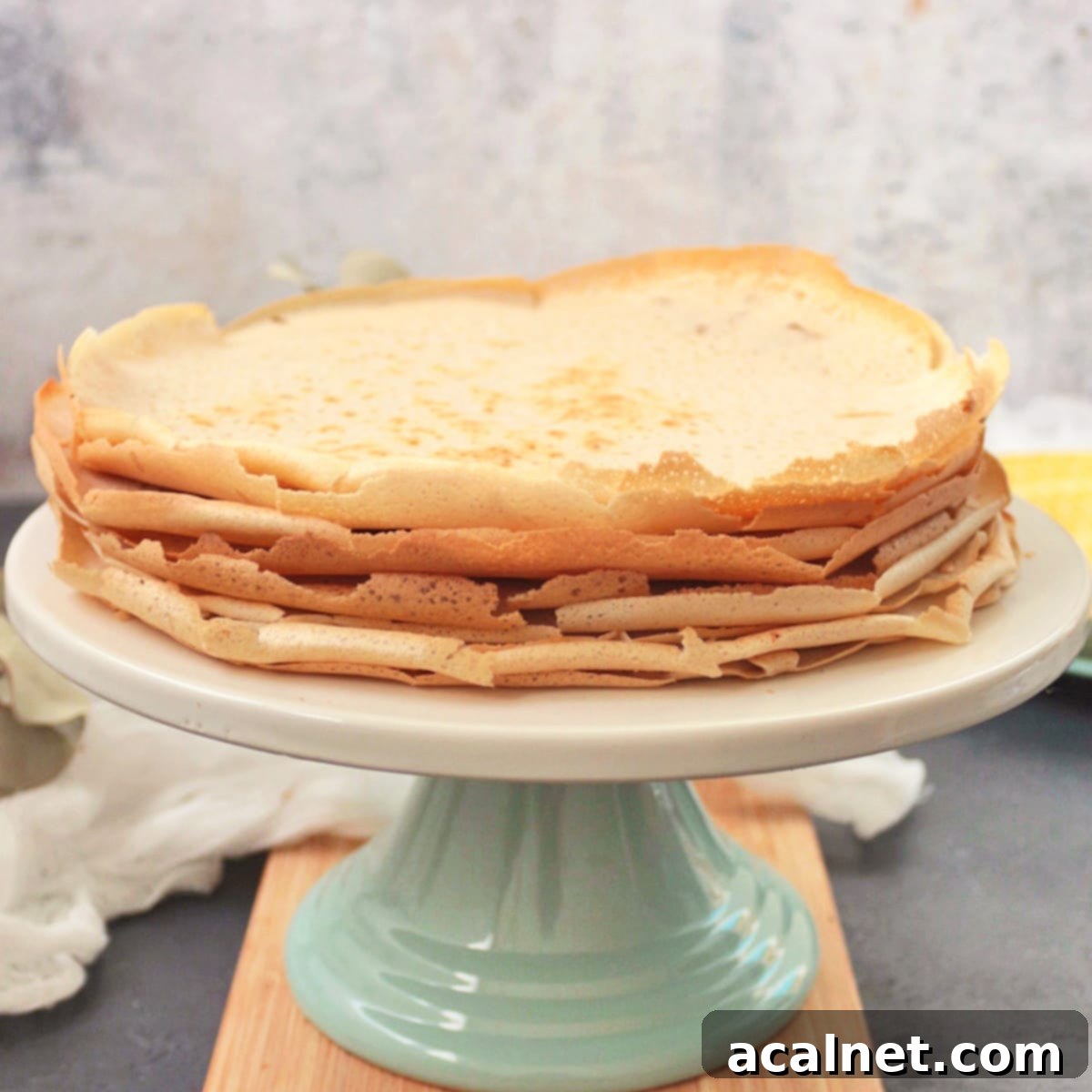Authentic Gluten-Free French Buckwheat Crêpes: Your Guide to Savory Galettes de Sarrasin
Uncover the culinary heart of Brittany, France, with these exquisite Buckwheat Crêpes, known locally as “galettes de sarrasin” or “galettes de blé noir.” These naturally gluten-free delicacies are crafted from simple buckwheat flour, offering a wonderfully versatile base that can transform from a delicate sweet dessert into a hearty savory meal. Dive into this traditional recipe and discover the rich flavors and cultural heritage behind these beloved French pancakes.
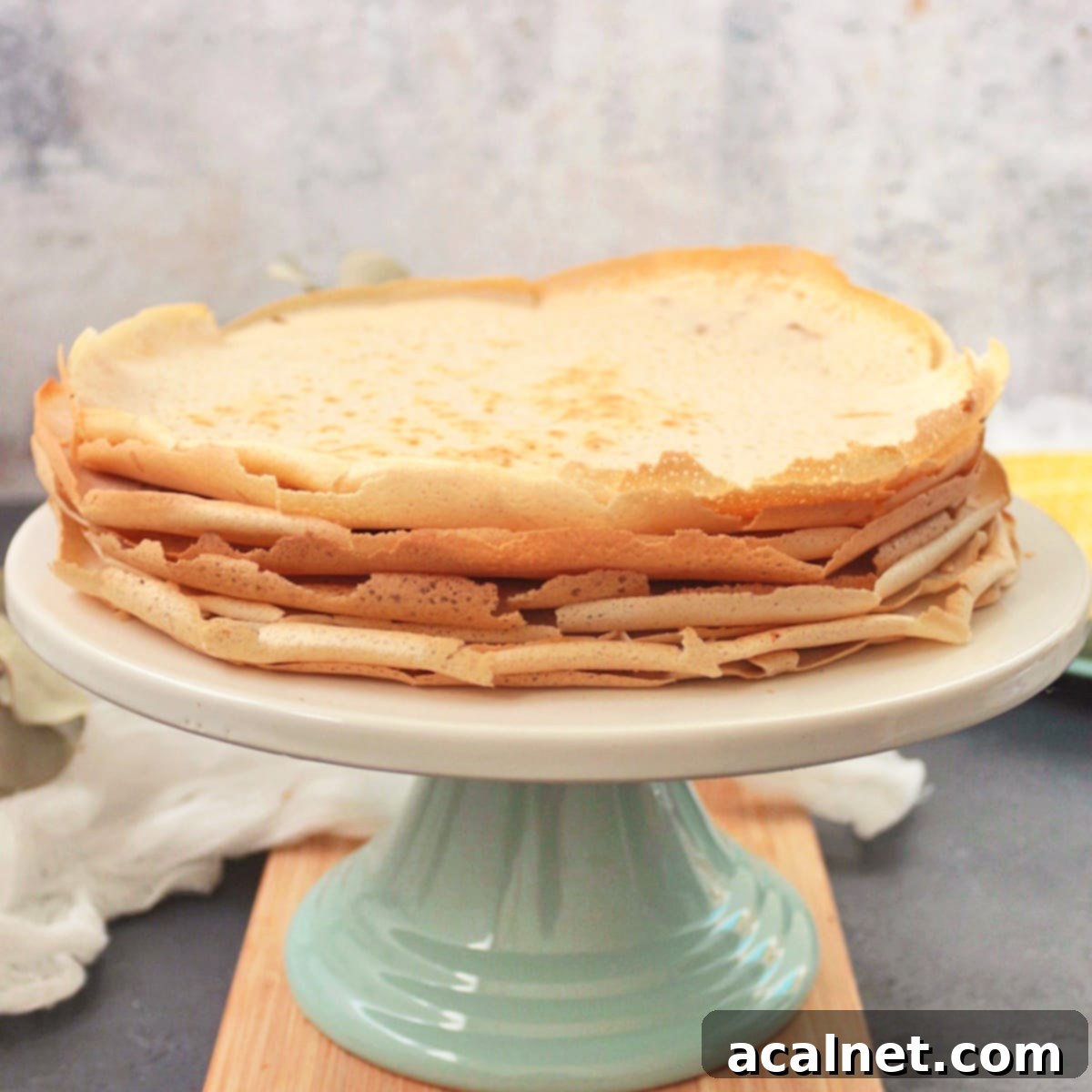
Why You’ll Adore This Buckwheat Crêpe Recipe
What truly sets this recipe apart, and what we cherish most about it, is its incredible versatility. Unlike standard crêpes, these buckwheat galettes effortlessly transition between sweet and savory applications. The possibilities for toppings and fillings are genuinely endless, making them perfect for any meal or occasion.
These naturally gluten-free buckwheat galettes offer a fantastic alternative to traditional French Crêpes, and you’ll be delighted to find they are just as simple to prepare. Requiring only four or five fundamental ingredients, these adaptable crêpes are ideal for breakfast, a light lunch, a satisfying dinner, or even an elegant dessert. Imagine starting your day with a fruity compote or enjoying them in the evening with a hearty filling of mushrooms, cheese, and a perfectly cooked egg. Their earthy flavor pairs beautifully with a wide array of ingredients, making them a staple in any gluten-free kitchen.
The Rich History of Buckwheat Crêpes: A Taste of Brittany
Buckwheat Crêpes are not just a dish; they are a cornerstone of French culinary tradition, originating specifically from the picturesque region of Brittany. In France, particularly in their homeland, these naturally gluten-free crêpes are almost exclusively referred to as ‘Galettes‘ or ‘Galettes Bretonnes‘ when they feature savory fillings. Their deep cultural roots mean they are a staple in Breton households and crêperies alike, often enjoyed with cider.
Beyond ‘Galettes de Sarrasin‘, you might also hear them called “Galettes de Blé Noir,” which translates to “Black Wheat Galettes.” This name is a direct nod to their distinctive, darker hue, which comes from the unbleached, and often un-hulled, buckwheat flour traditionally used. This darker flour imparts a robust, nutty flavor and a visually appealing rustic appearance that truly defines an authentic Breton galette. Understanding their origin enhances the experience of making and enjoying these truly traditional French crêpes.
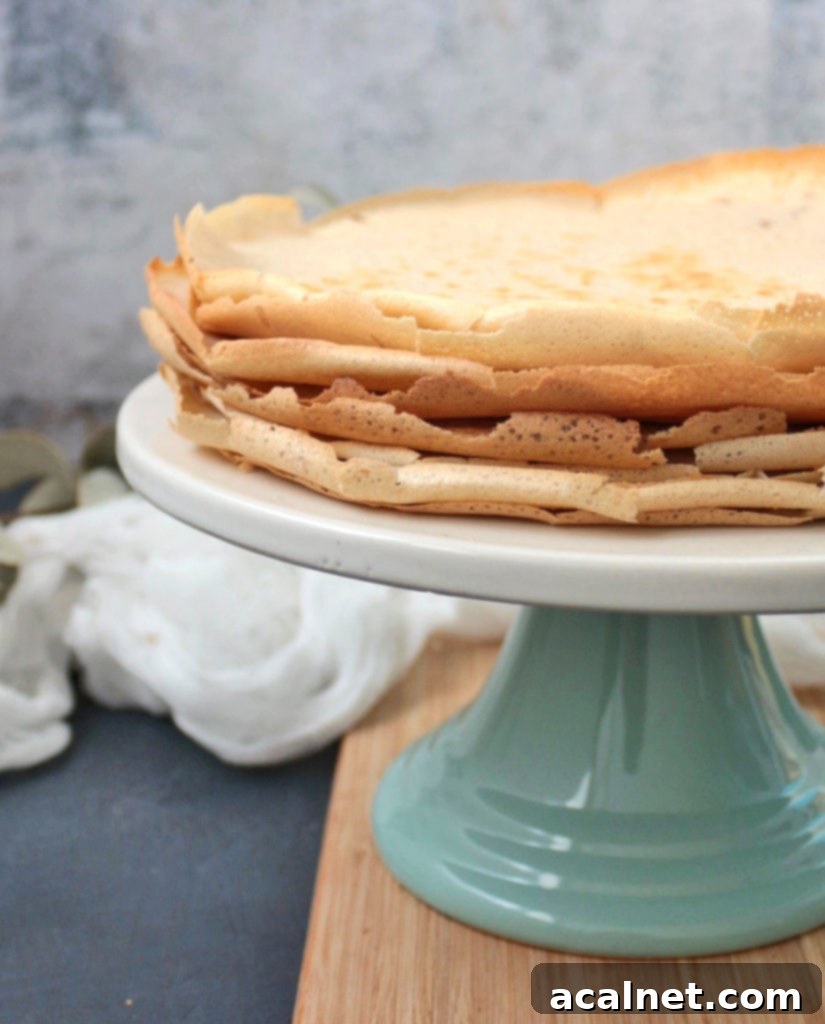
Essential Ingredients for Perfect Buckwheat Galettes
When delving into traditional recipes like this one, it’s important to recognize that variations exist, particularly for dishes passed down through generations. While you’ll encounter numerous family recipes for buckwheat crêpes, the core ingredients remain wonderfully simple and accessible, allowing the natural flavor of the buckwheat to shine. As a general rule, you’ll need just a few key components to craft this delightful dish:
- Buckwheat Flour (Farine de Sarrasin): This is the star of the show. Authentic Breton recipes often call for unbleached buckwheat flour, which is responsible for the characteristic dark, earthy brown color and robust, nutty flavor of the galettes. While you can find lightly bleached varieties in most supermarkets and health food stores (which also work beautifully), seeking out the unbleached version will yield a truly traditional taste and appearance. The quality of your buckwheat flour is paramount for the best results.
- A Liquid: The choice of liquid can subtly alter the texture of your crêpes. You can use plain water for a lighter, crispier galette, milk for a richer and creamier texture, or even a blend of both. Some traditional recipes also incorporate beer, which adds a unique depth of flavor and contributes to a lighter batter due to its carbonation. For an extra light and airy crêpe, sparkling water is an excellent choice, as it introduces tiny bubbles into the batter.
- Eggs: Essential for binding the ingredients together and providing structure and richness to the crêpes.
- Salt or Sugar: This ingredient determines whether your crêpes will be savory or sweet. A pinch of salt is crucial for savory galettes, enhancing their earthy notes, while a tablespoon of caster sugar transforms them into a perfect base for sweet toppings. You can also experiment with a hint of spice, like a touch of cinnamon for sweet crêpes or a dash of black pepper for savory ones, to personalize the flavor profile.
The flexibility in liquid choice is particularly interesting. My personal preference, inspired by my mother’s method, is to use a harmonious blend of Sparkling Water and Milk. This combination masterfully balances richness and lightness; the milk provides a creamy, tender texture, while the sparkling water ensures the crêpes are incredibly airy and delicate. However, feel free to use 100% water, sparkling water, or milk based on your desired texture – each will yield a delicious result.
For savory galettes, a modest amount of salt is incorporated into the batter. Beyond salt, consider adding a pinch of freshly ground black pepper, herbs like chives or parsley, or even a touch of garlic powder to elevate the flavor. For sweet crêpes, simply substitute the salt with caster sugar. You can also infuse sweet batters with vanilla extract, orange blossom water, or a hint of citrus zest for added aroma and taste.
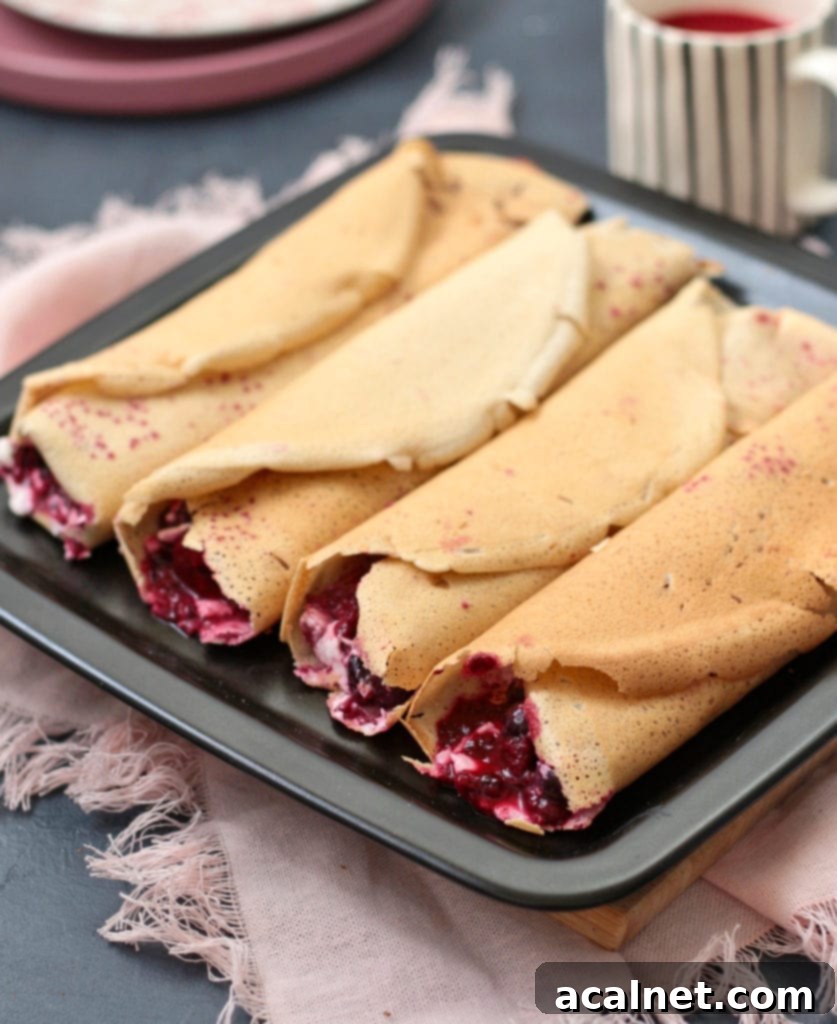
Mastering the Art of Making Buckwheat Galettes
Creating these delightful gluten-free crêpes with buckwheat flour is surprisingly straightforward. The process is remarkably simple, making it accessible even for novice cooks. Here’s a breakdown of the key steps:
- Begin by combining the Buckwheat Flour with either salt (for savory crêpes) or caster sugar (for sweet crêpes) in a spacious mixing bowl.
- In a separate bowl, thoroughly whisk together the eggs, sparkling water, and milk until well combined.
- Form a well in the center of your dry ingredients, then gradually pour in the wet mixture. Whisk continuously until you achieve a perfectly smooth, thin, and liquid batter. It’s crucial to ensure there are no lumps for a silky crêpe. Once mixed, cover the bowl and allow the batter to rest in the refrigerator for a minimum of 30 minutes, though an hour or two is often preferable for optimal results.
The resting period is not merely a suggestion; it’s a vital step for buckwheat crêpes, arguably even more critical than for those made with wheat flour. Since buckwheat is a naturally gluten-free flour, the batter lacks the elastic gluten network that provides structure to traditional wheat-based crêpes. Without sufficient resting, your buckwheat crêpes will be more prone to tearing and breaking during cooking.
Allowing the batter to rest gives the buckwheat flour ample time to fully hydrate and absorb all the liquid. This process makes the starches more pliable and the batter more cohesive, resulting in crêpes that are significantly more flexible, easier to work with, and less likely to fall apart in the pan. You’ll notice the batter thickens slightly during this time. Before cooking, give it another quick whisk to ensure it’s smooth and the consistency is just right. If it appears too thick, a tiny splash of water or milk can help achieve the perfect pourable consistency.

Tips for Perfectly Cooked Buckwheat Crêpes
Cooking crêpes at home can sometimes feel a bit daunting, primarily because professional crêpe makers in France use specialized, large, heavy, round griddles. While these aren’t typically found in home kitchens, achieving perfectly thin and crispy crêpes is still entirely possible with standard kitchen equipment. Here are your best options for cooking crêpes at home:
- A Non-Stick Crepe Pan: This is often the best investment if you plan to make crêpes regularly. Designed specifically for crêpes, these pans usually feature low sides, making it easy to spread the batter thinly and flip the crêpes with precision. Many come with a T-shaped crêpe spreader and a spatula, which can greatly simplify the process. This is my preferred tool for consistently achieving thin, golden-brown crêpes.
- A Home Crepe Machine: For dedicated crêpe enthusiasts, a standalone electric crêpe machine offers a fantastic, consistent cooking surface, closely mimicking the professional experience. These are perfect for those who frequently enjoy crêpes and want a specialized appliance.
- Any Non-Stick Large Pan or a Cast Iron Frying Pan: If you don’t have a specialized crêpe pan, a good quality large non-stick frying pan or a well-seasoned cast iron pan will certainly do the job. The key is to ensure the pan is adequately greased between each crêpe to prevent sticking and facilitate easy flipping. A paper towel lightly dipped in butter or oil works wonders for this.
Regardless of your pan choice, the crêpes should be cooked over an even medium heat. The first crêpe often serves as a test run, helping you gauge and adjust the temperature. Keep a close eye on your crêpes; if they’re browning too quickly, lower the heat slightly, and if they’re not getting any color, increase it. You’ll know a crêpe is ready to be flipped when its edges begin to curl up and the surface looks set.
How you serve your crêpes dictates the cooking approach:
- When served sweet, simply cook each crêpe on both sides until golden, then stack them and fill with your chosen fruits, chocolate spread, whipped cream, or other sweet condiments just before serving.
- When served savory, you have a couple of excellent options:
- Method 1 (Instant Fill): Cook one side of the crêpe until set, then flip it. Immediately place your desired savory ingredients (like cheese, ham, or mushrooms) over the cooked side while the second side finishes cooking. The residual heat will melt the cheese and warm the fillings beautifully.
- Method 2 (Re-bake): Fully cook all your crêpes first. Then, fill them with your savory ingredients and re-bake them in the oven. This method is particularly good for fillings that require more cooking or for a gratinéed top. To prevent the crêpes from drying out in the oven, it’s advisable to include a sauce or some cream with your filling.

Common Questions About Buckwheat Crêpes
For the best flavor and texture, crêpes are truly best enjoyed fresh off the pan, ideally while still slightly warm. However, if you have leftovers, they can be stored in the refrigerator. To keep them from drying out, stack them neatly on a large plate and cover them tightly with plastic wrap or aluminum foil. This method helps maintain their moisture and keeps them pliable.
When properly stored, buckwheat crêpes will remain fresh in the refrigerator for up to 48 hours. It’s important to note that buckwheat crêpes tend to be naturally crisper and more delicate than traditional wheat-based crêpes, especially after being refrigerated. For optimal enjoyment, I highly recommend gently reheating them before serving. A quick warm-up in a lightly greased pan or microwave will soften them beautifully and revive their delightful texture.
Absolutely! While enjoying them fresh is ideal, crêpes freeze exceptionally well for longer storage. To prevent them from sticking together, place a piece of baking paper between each crêpe before stacking them. Once stacked, wrap the entire pile thoroughly in plastic wrap, followed by a layer of aluminum foil. This double layer of protection helps prevent freezer burn. You can store them in the freezer for up to one month. To reheat, simply place them in the microwave for a few seconds until pliable, or warm them in a low-temperature oven (around 250°F / 120°C) for about 5 minutes.
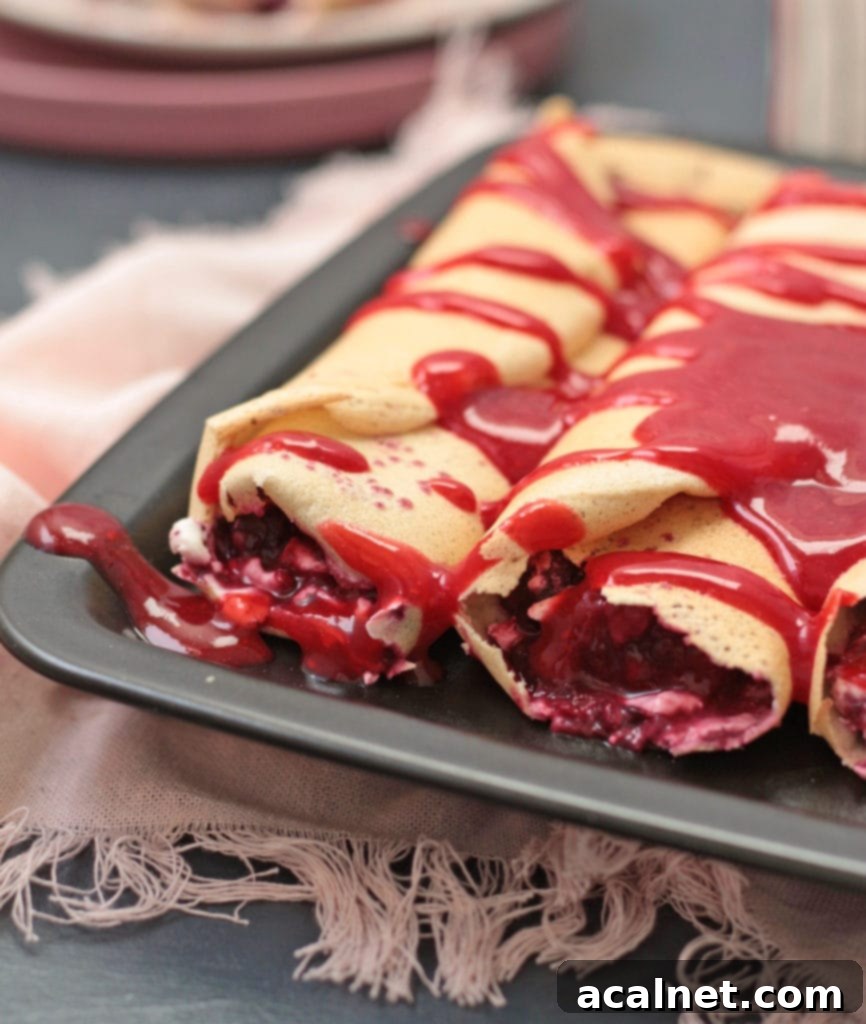
Creative Fillings & Toppings for Your Buckwheat Galettes
Perhaps the most enjoyable aspect of making crêpes is the boundless creativity you can unleash with fillings and toppings. This inherent versatility also makes them a fantastic dish for entertaining! You can easily prepare a variety of sweet and savory options and let your guests craft their own perfect combinations, making for a fun and interactive dining experience.
Inspiring Savory Galette Ideas
- Classic Ham and Cheese (often a fried egg is added to make a “galette complète”)
- Creamy Mushrooms and Sautéed Spinach with a touch of garlic
- Elegant Smoked Salmon with Dill Cream Cheese and fresh chives
- Hearty Chicken and Mushroom in a light white wine sauce
- The iconic “Galette Complète”: Cheese, Ham, and a fried Egg, folded into a square
- Goat Cheese, Honey, and Walnuts for a sophisticated flavor profile
- Roasted Vegetables with a drizzle of balsamic glaze
Delightful Sweet Crêpe Ideas
- Rich Chocolate Hazelnut Spread (like Nutella) with sliced Bananas
- Vanilla Ice Cream with a generous pour of warm Chocolate Sauce
- Tender Caramelized Apples with a sprinkle of cinnamon
- Fresh Lemon Juice and a drizzle of golden Honey
- Decadent Cream Cheese with a homemade Mixed Berry Compote (as pictured here), beautifully topped with a vibrant Raspberry Coulis or Strawberry Coulis
- Exotic Mango Coulis, fresh mango slices, and a sprinkle of desiccated coconut
- Warm and comforting Stewed Rhubarb with a dollop of crème fraîche
- Simple Butter and Sugar (Beurre Sucre), a timeless French classic
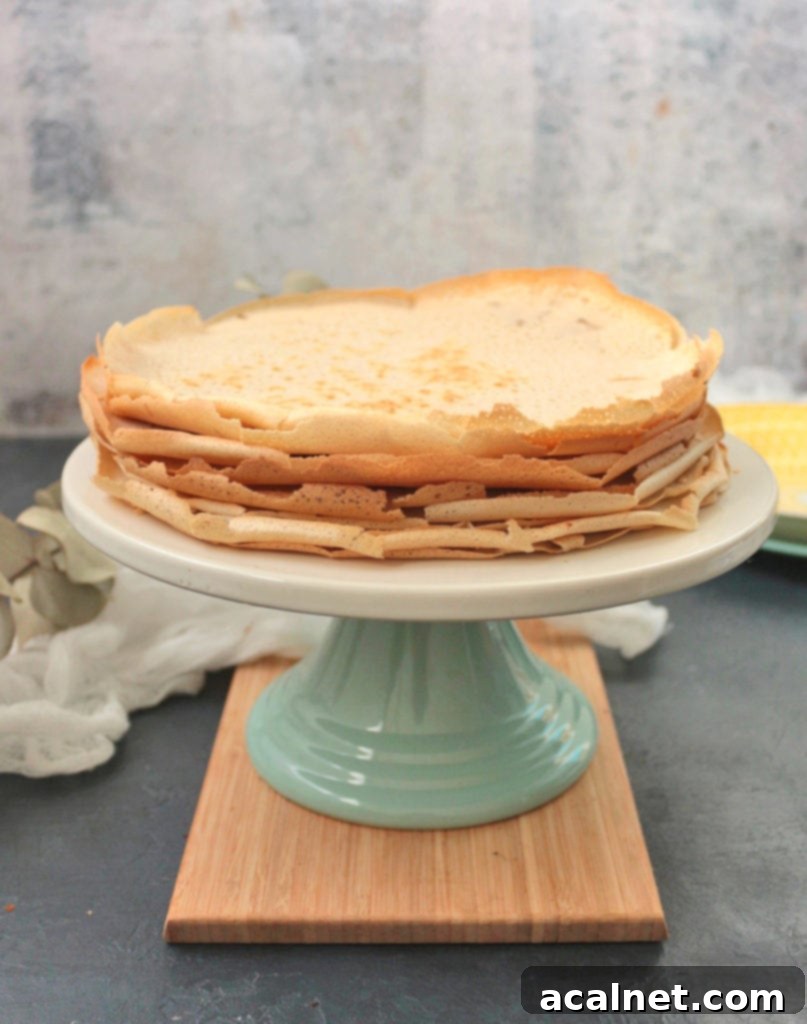
Discover More Traditional French Recipes
- Sablé Breton Cookies (French Salted Butter Cookies)
- Easy Cherry Clafoutis
- Easy French Apple Cake
- Choux à la Crème
- Strawberry Charlotte Cake
- Fraisier Cake
- Choux au Craquelin
- Classic French Profiteroles
- Brioche Bread French Toast
Made this recipe?
Let us know if you liked it by leaving a comment below, and tag us on Instagram @a.baking.journey with a photo of your creation!
Recipe Card

French Buckwheat Crêpes (Galettes de Sarrasin)
Print Recipe
Ingredients
- 250 gr (1 2/3 cup) Buckwheat Flour
- 2 large Eggs
- 240 ml (1 cup) Full Cream / Whole Milk
- 240 ml (1 cup) Sparkling Water, or still water
- 1 teaspoon Salt, to make savoury
- 1 tablespoon Caster Sugar, to make sweet
- Butter, to grease to pan
Instructions
- In a large mixing bowl, combine the Buckwheat Flour with either Salt (for savory crêpes) or Caster Sugar (for sweet crêpes). Create a well in the center. In a separate bowl, whisk the Eggs, Milk, and Sparkling Water. Pour the wet ingredients into the well and whisk thoroughly until you achieve a thin, smooth, and lump-free batter.
- Cover the bowl and allow the batter to rest in the refrigerator for a minimum of 30 minutes, or ideally for 1 to 2 hours. This crucial step allows the buckwheat flour to fully absorb the liquid, resulting in more pliable and less fragile crêpes.
- Before cooking, re-whisk the batter gently as it may have thickened. Preheat a medium-sized, non-stick pan over medium heat and lightly grease it with a little melted butter. Once warm, pour a small amount of crêpe batter into the pan (see note 1), tilting and swirling the pan to spread the batter thinly and evenly across the bottom.
- Cook for approximately 1 minute on the first side, or until the edges begin to curl and turn golden brown. Carefully flip the crêpe and cook for another minute on the second side until it is also golden and cooked through. Repeat with the remaining batter, greasing the pan lightly between each crêpe.
- – Troubleshooting Batter Consistency: If your batter appears too thick and doesn’t spread easily in the pan, gradually add a tablespoon or two of extra water or milk until you reach the desired thin consistency.
– Troubleshooting Batter Consistency: If the batter is too runny and yields very thin, flimsy crêpes that tear easily, whisk in a small amount (1-2 tablespoons) of additional buckwheat flour.
- To store cooked crêpes, allow them to cool completely. Stack them with parchment paper in between if desired, then cover tightly with plastic wrap or aluminum foil. Refrigerate for up to 4 days, or freeze for longer storage (see FAQs).
Would you like to save this recipe?
We’ll email this post to you, so you can come back to it later!
Notes
- The most efficient way to cook a crêpe is to hold the pan with one hand and pour the batter with the other. While pouring, make a slow, circular movement with the hand holding the pan to homogeneously spread the batter around. For more detailed techniques and tips on crêpe cooking, you can explore my Classic French Crêpe Recipe.
Nutrition (per serving)
